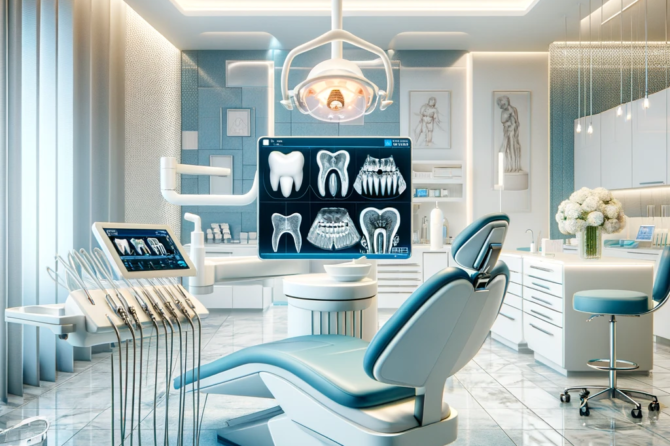
Digital Dentistry
The landscape of dental care is undergoing a significant transformation, thanks to the advent of digital dentistry. This innovative approach is not just a fleeting trend; it represents a fundamental shift in how dental professionals diagnose, plan, and execute treatments. In this post, we'll explore what digital dentistry is, its benefits, and how it's revolutionizing dental care.
What is Digital Dentistry? Digital dentistry refers to the use of digital technologies and tools to conduct dental procedures. It encompasses a range of techniques and equipment, from digital X-rays to computer-aided design (CAD) and computer-aided manufacturing (CAM), including 3D printing.
Key Components of Digital Dentistry:
- Digital Imaging: Advanced imaging techniques, like digital X-rays and intraoral cameras, provide clearer, more detailed views of a patient's mouth. This precision aids in more accurate diagnoses and treatment planning.
- CAD/CAM Technology: Computer-aided design and computer-aided manufacturing technology have revolutionized dental prosthetics. Dentists can now design and create dental restorations like crowns, veneers, inlays, and onlays in-office, often in a single visit.
- 3D Printing: Utilized for creating precise dental models, orthodontic devices, and even some types of dental restorations. This technology enhances customization and speeds up the treatment process.
- Digital Impressions: Say goodbye to the traditional, often uncomfortable, dental molds. Digital impressions are faster, more comfortable for the patient, and provide more accurate data for dental restorations.
Benefits of Digital Dentistry:
- Enhanced Accuracy: Digital tools provide more precise measurements and imaging, leading to better-fitting restorations and more effective treatments.
- Improved Efficiency: Many procedures can be done faster, reducing the time patients spend in the chair and allowing for quicker turnarounds on dental devices.
- Patient Comfort: Techniques like digital impressions are less invasive, improving the patient experience.
- Customization: Advanced technology allows for greater customization in treatments, ensuring each patient receives care that is tailored to their specific needs.
- Eco-Friendly: Digital processes often reduce the need for disposable materials, contributing to more environmentally friendly practices.
The Future of Dental Care: As technology continues to advance, digital dentistry is set to become more prevalent. This shift not only enhances the efficiency and accuracy of dental care but also aligns with the increasing demand for minimally invasive treatments that prioritize patient comfort.
Conclusion Digital dentistry is more than just a new set of tools; it represents a new philosophy in dental care—one that combines innovation, efficiency, and patient-centric approaches. By integrating digital dentistry into our practice, we're not only staying at the forefront of technological advancements but also providing our patients with the highest standard of dental care.
Leave a reply